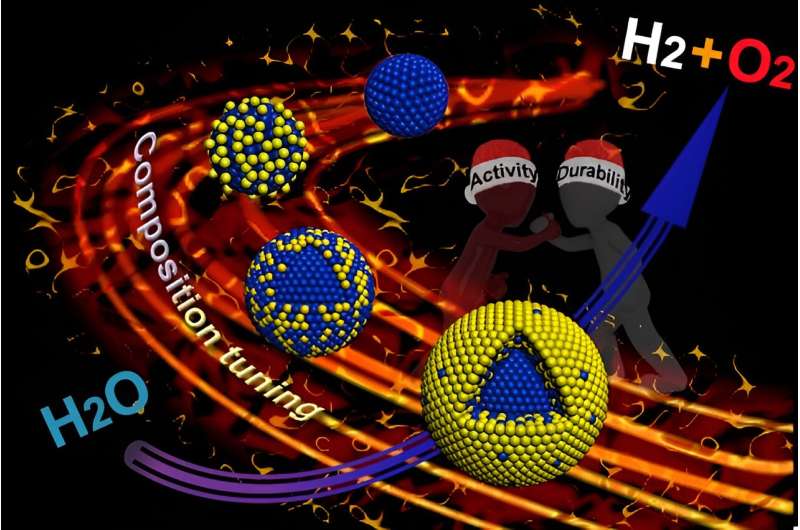
Recent research published in National Science Review by a team led by Dr. Rong Cao and Dr. Minna Cao from the Fujian Institute of Research on the Structure of Matter, Chinese Academy of Sciences, and Dr. Dongshuang Wu from Nanyang Technological University, Singapore, has demonstrated the successful design and synthesis of a series of sub-10 nm core-shell nanocatalysts consisting of an Au core and an AuxIr1-x alloy shell.
The first author Dr. Huimin Wang successfully synthesized and systematically tested the electrocatalytic water-splitting performance of this series of materials.
Dr. Huimin Wang found that the active site IrOx can be precisely designed by modulating the Au/Ir component on the surface of the Au@AuxIr1-x core-shell structure. IrOx species on the Au@AuxIr1-x surface is generally considered the active species for OER.
However, an excessive amount of IrOx shifts the d-band center of the catalyst close to the Fermi level, causing a too-strong binding affinity of intermediates that needs a quite high overpotential for the OER. Synchrotron X-ray-based spectroscopies, electron microscopy, and density functional theory calculations combined with electrochemical tests revealed that an optimal ratio of IrOx combined with a suitable d-band center yields the best OER activity.
Among them, the intrinsic activity and durability of Au@Au0.43Ir0.57 are substantially improved. With a load of only 0.02 mgIr/cm2, it is stable for at least 320 h at a high current density of 100 mA/cm2.

More information:
Huimin Wang et al, Sub-10-nm-sized Au@AuxIr1−x metal-core/alloy-shell nanoparticles as highly durable catalysts for acidic water splitting, National Science Review (2024). DOI: 10.1093/nsr/nwae056
Citation:
Efficient and durable water splitting in acidic media (2024, March 20)
retrieved 20 March 2024
from https://phys.org/news/2024-03-efficient-durable-acidic-media.html
This document is subject to copyright. Apart from any fair dealing for the purpose of private study or research, no
part may be reproduced without the written permission. The content is provided for information purposes only.







